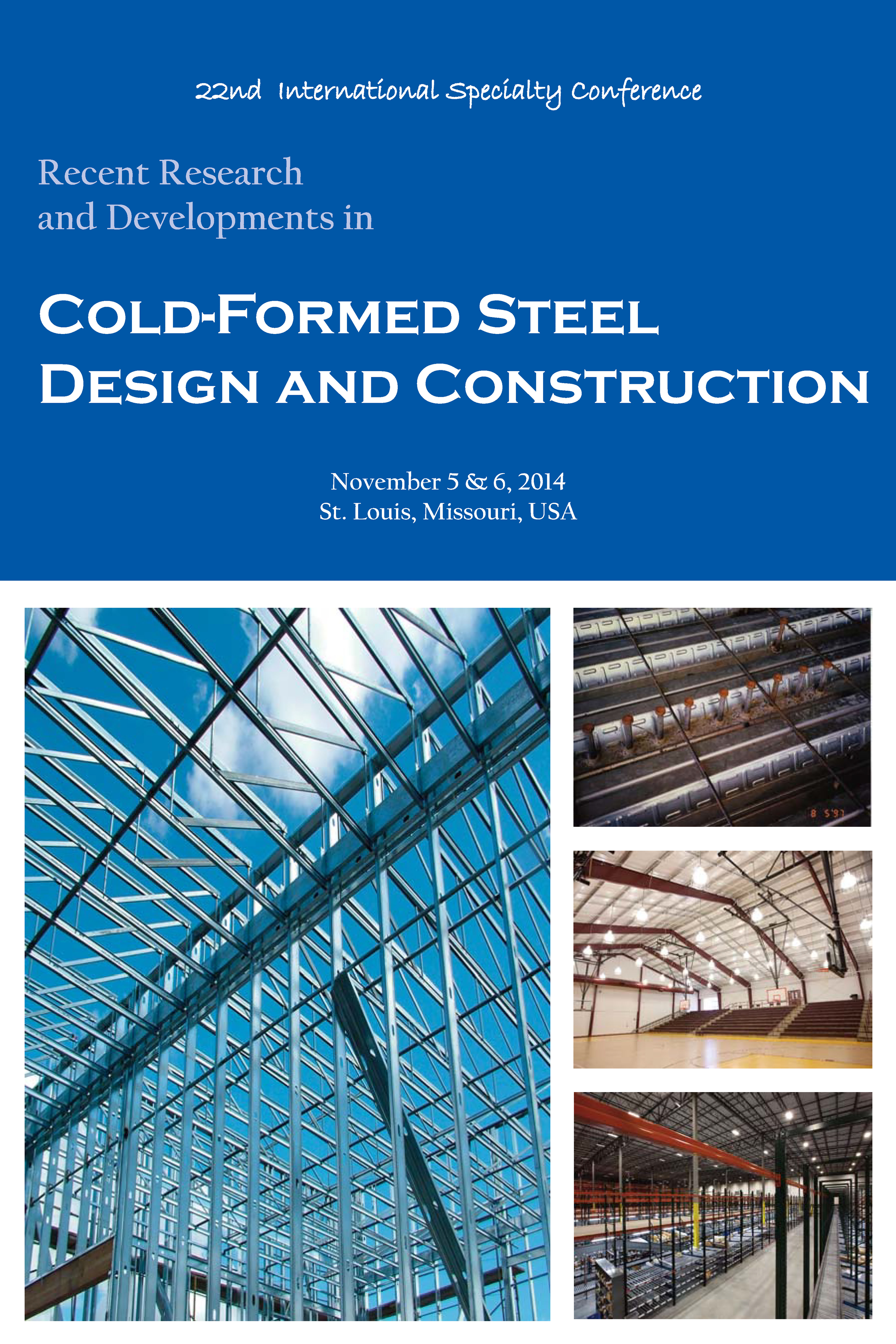Session Dates
06 Nov 2014
Abstract
The Component Stiffness Method is a displacement compatibility method used to analyze C- and Z- section supported roof systems. The method provides a detailed analysis of the flexibility in the roof system and the distribution of forces as they flow out of the system. Parametric studies of the equations for typical roof systems have shown that by ignoring the flexibility of some of the components, the method can be simplified with little impact on the anchorage forces calculated. Changes have also been made to the way in which cross section deformations are incorporated into the method. This paper focuses on the changes to the supports + third point bracing configuration and compares the bracing force predicted by the revised equation to the existing equations. The prediction equations are applied to a series of purlins and sheathing systems to represent the ends of the spectrum and the results are compared.
Department(s)
Civil, Architectural and Environmental Engineering
Research Center/Lab(s)
Wei-Wen Yu Center for Cold-Formed Steel Structures
Meeting Name
22nd International Specialty Conference on Cold-Formed Steel Structures
Publisher
Missouri University of Science and Technology
Document Version
Final Version
Rights
© 2014 Missouri University of Science and Technology, All rights reserved.
Document Type
Article - Conference proceedings
File Type
text
Language
English
Recommended Citation
Seek, Michael W., "Improvements to the Prediction of Brace Forces in Z-Purlin Roof Systems with Support + Third Point Bracing" (2014). CCFSS Proceedings of International Specialty Conference on Cold-Formed Steel Structures (1971 - 2018). 3.
https://scholarsmine.mst.edu/isccss/22iccfss/session07/3
Improvements to the Prediction of Brace Forces in Z-Purlin Roof Systems with Support + Third Point Bracing
The Component Stiffness Method is a displacement compatibility method used to analyze C- and Z- section supported roof systems. The method provides a detailed analysis of the flexibility in the roof system and the distribution of forces as they flow out of the system. Parametric studies of the equations for typical roof systems have shown that by ignoring the flexibility of some of the components, the method can be simplified with little impact on the anchorage forces calculated. Changes have also been made to the way in which cross section deformations are incorporated into the method. This paper focuses on the changes to the supports + third point bracing configuration and compares the bracing force predicted by the revised equation to the existing equations. The prediction equations are applied to a series of purlins and sheathing systems to represent the ends of the spectrum and the results are compared.



